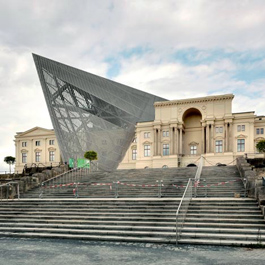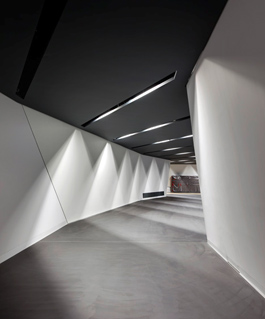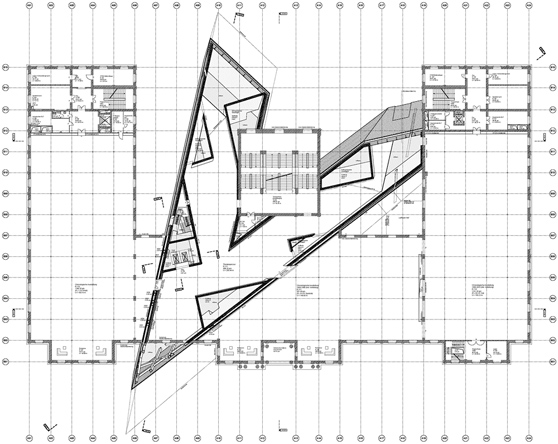
A military museum designed by Libeskind is opening in Dresden
 |
"We tell military history in a completely different way, not as a history of technology and events, but we put the person at the center," said Matthias Rogg, the museum's director, to ČTK and Czech Radio, according to whom this approach is completely new in such a dimension among military museums.
This was made possible by a radical reconstruction costing 62 million euros (1.5 billion CZK) from the workshop of the renowned American architect Daniel Libeskind, who "cut" the original 19th-century armory building and later the museum of the German People's Army into two parts with a massive steel-concrete wedge weighing almost 15,000 tons, in which new exhibition spaces were created.
In addition to giant exhibits, such as the original Nazi V2 rocket, thematic exhibitions have found their place, showing how war and militarism influenced language, music, children's games, or clothing. In addition to classic uniforms, there are also fashion creations by prominent designers such as Vivienne Westwood on display.
Among the slanted walls of the new building, visitors are also confronted with the suffering that war brings and the deformities it inflicts on the human body. This is symbolized by a display of prostheses, the effect of which is intensified by the stories of their owners.
"Daniel Libeskind said at the beginning that it has to be an open space for thinking about organized violence, and from the start, he emphasized that these reflections cannot take place within the classic four walls," described the architect's approach by his collaborator Joachim Klein. For Libeskind, working on the museum of the German army was a challenge also considering his roots, as he comes from a Polish Jewish family that survived the Nazi Holocaust.
 |
"The new building is also meant to create a connection with Dresden, which has suffered greatly from Germany's military past," Klein explained another dimension of the unconventional architectural element, from the highest floor of which visitors can view the panorama of the rebuilt city on the Elbe.
Director Rogg hopes that the new building will also attract many fans of modern architecture to the museum. At the same time, he believes that his exhibitions will also appeal to military enthusiasts. In the chronological section, which remains in the original building, more than 10,000 exhibits from German military history from the 14th century to the present are prepared for them. The outdoor area is complemented by a display of tanks and armored vehicles from the armaments of both post-war German states and the current Bundeswehr.
The Dresden Military Historical Museum will be opened on Friday by German Defense Minister Thomas de Maizière and will be accessible to the public from Saturday. Until the end of the year, no admission fee will be charged. Rogg would be pleased if interested visitors from nearby Czech Republic and Poland also found their way to it. "At this moment, the museum is still only bilingual, and all texts are in German and English. However, we are preparing audio guides for Czech and Polish visitors," Rogg promised. However, they will be available only next year.
 |
The English translation is powered by AI tool. Switch to Czech to view the original text source.
0 comments
add comment












